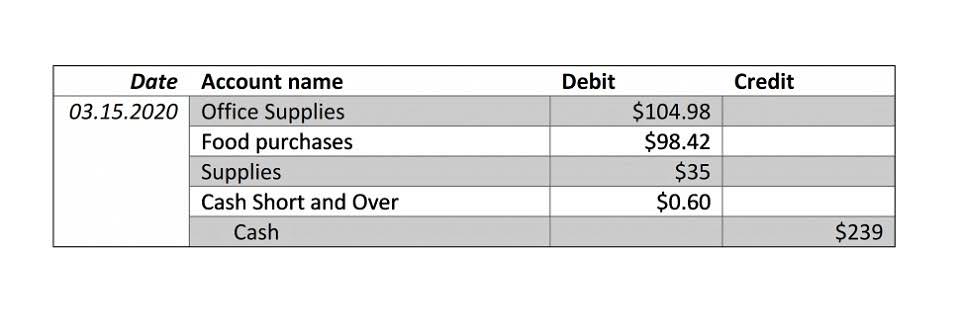
We’ll explore the basics of the LIFO inventory valuation method as well as an example of how to calculate LIFO. We’ll also compare the LIFO and FIFO inventory costing methods so you can choose the right valuation system for your business. Last-in, first-out (LIFO) is an inventory method popular with companies that experience frequent increases in the cost of their product. LIFO is used primarily by oil companies and supermarkets, because inventory costs are almost always rising, but any business can use LIFO.
How do I calculate COGS using LIFO?
- Therefore the ending inventory balance will be valued at earlier costs, while the cost of products sold would be valued at the most recent costs.
- The later costs recorded on the materials ledger cards are used for costing materials requisitions, and the balance consists of units received earlier.
- The LIFO method assumes that Brad is selling off his most recent inventory first.
- The table below depicts the company’s various purchasing transactions for Elite Roasters products.
- As a result, LIFO isn’t practical for many companies that sell perishable goods and doesn’t accurately reflect the logical production process of using the oldest inventory first.
- Under LIFO, lower reported income makes the business look less successful on paper, but it also has a lower tax liability.
We’ll use an example to show how FIFO and LIFO produce different inventory valuations for the same business. Finally, FIFO encourages a regular inventory turnover as older stock is sold off first. However, if inventory remains stagnant for a few years, there can be a significant discrepancy between cost of goods sold and market value when sales resume. FIFO, or First In, First Out, assumes that a company sells the oldest inventory first. Therefore the first batch of inventory that they order is also the first to be disposed of, leading to a steady inventory turnover. We presume that the most recent purchase was sold first under, last in, and first out.
How confident are you in your long term financial plan?
As you can see from these sample calculations, the method of inventory accounting you choose affects your cost of goods sold, profit, and inventory value. Unlike LIFO, the FIFO method is allowed under both GAAP and IFRS, so it can be used for reporting both in the U.S. and outside it. In addition to being allowable by both IFRS and GAAP users, the FIFO inventory method may require greater consideration when selecting an inventory method.
- FIFO can be a better indicator of the value for ending inventory because the older items have been used up while the most recently acquired items reflect current market prices.
- In contrast, FIFO, or First In, First Out, assumes that older inventory is the first to be sold.
- Ignore all the other information and just focus on the information we have from January 1st to January 7th.
- One downside to using the LIFO method is that older inventory may continue to sit in the warehouse unless the business sells all of its newer inventory.
- This is the opposite of the FIFO method and can result in old inventory staying in a warehouse indefinitely.
Calculating COGS and Profit
It occurs when a company that uses the last-in, first-out (LIFO) inventory costing method liquidates its older LIFO inventory. A LIFO liquidation occurs when current sales exceed purchases, resulting in the https://www.bookstime.com/articles/operating-cycle liquidation of any inventory not sold in a previous period. Cost of sales using LIFO includes the newest units purchased at $54. The oldest, less expensive items remain in the ending inventory account.
Everything You Need To Master Financial Modeling

ABC Company uses the LIFO method of inventory accounting for its domestic stores. It purchased 1 million units of a product annually for three years. The per-unit cost is $10 in year one, $12 in year two, and $14 in year three, and ABC sells each unit for $50.

Major Differences – LIFO and FIFO (During Inflationary Periods)
In both cases, only goods actually sold are included in the calculations. This means that if you purchased a batch of 300 goods and only sold 150, you would multiply the purchase price by 150. FIFO is also generally considered to be a more lifo equation accurate and reliable inventory valuation method since it is more difficult to misrepresent costs. As such, FIFO is a generally accepted accounting principle in almost all jurisdictions, whereas LIFO accounting is only accepted in some.
The FIFO (“First-In, First-Out”) method means that the cost of the oldest inventory of a firm is used for the COGS calculations (Cost of Goods Sold). LIFO (“Last-In, First-Out”) refers to the cost of the most recent company’s inventory. Kristen Slavin is a CPA with 16 years of experience, specializing in accounting, bookkeeping, and tax services for small businesses. A member of the CPA Association of BC, she also holds a Master’s Degree in Business Administration from Simon Fraser University. In her spare time, Kristen enjoys camping, hiking, and road tripping with her husband and two children. The firm offers bookkeeping and accounting services for business and personal needs, as well as ERP consulting and audit assistance.

The FIFO and LIFO methods impact your inventory costs, profit, and your tax liability. Keep your accounting simple by using the FIFO method of accounting, and discuss your company’s regulatory and tax issues with a CPA. Finally, the difference between FIFO and LIFO costs is due to timing.
- On the income statement, it would provide significant revenue and cost of goods sold matching.
- Since 2014, she has helped over one million students succeed in their accounting classes.
- In many cases, customers prefer to have newer goods rather than older products.
- LIFO (“Last-In, First-Out”) means that the cost of a company’s most recent inventory is used instead.
- As long as your inventory costs increase over time, you can enjoy substantial tax savings.
- Learn more about the difference between LIFO vs FIFO inventory valuation methods.

When sales are recorded using the FIFO method, the oldest inventory–that was acquired first–is used up first. FIFO leaves the newer, more expensive inventory in a rising-price environment, on the balance sheet. As a result, FIFO can increase net income because inventory that might be several years old–which was acquired for a lower cost–is used to value COGS. However, the higher net income means the company would have a higher tax liability. When sales are recorded using the LIFO method, the most recent items of inventory are used to value COGS and are sold first. In other words, the older inventory, which was cheaper, would be sold later.